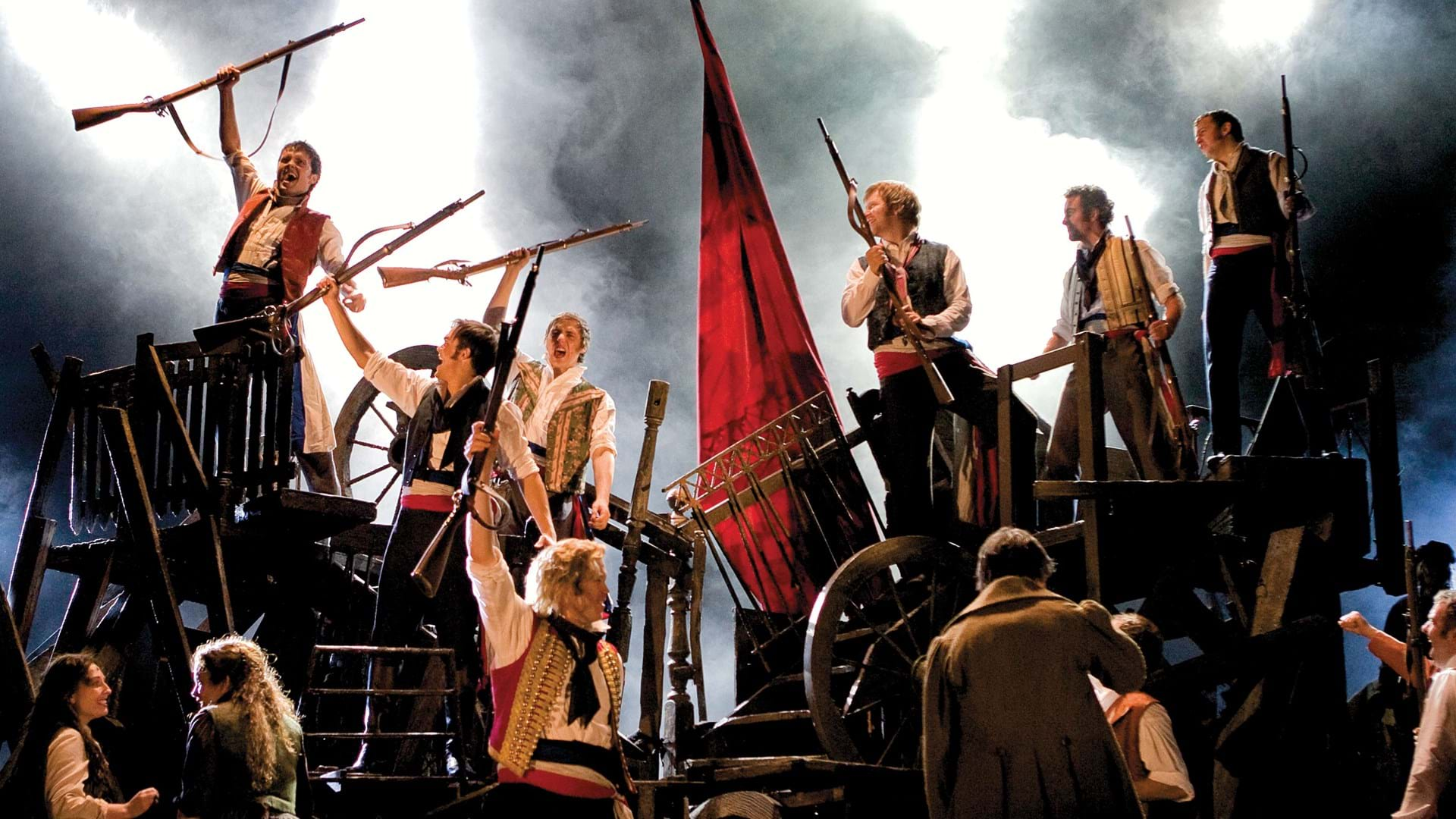When a musical’s so famous it can sell t-shirts with nothing but “24601” printed on them, the job’s done. Audiences need no convincing; it’s why this Edinburgh run’s already sold out. Still, it’s good to have reassurance that no-one has let the side down, and with this production, originally conceived for the silver anniversary in 2009, they haven’t. No-one will leave the Festival Theatre with more than minor quibbles based on personal preferences of how they like their Les Mis done.
In recent memory, the Golden Globe winning film has brought new (and big name) associations to the piece. Without the oomph that level of Hollywood cachet gives, it’s fair to say these principals do not take their characters new places, but nor do they disappoint. Killian Donnelly‘s Valjean leans to the kindly rather than brooding sides of his character, ages well and excels at Bring Him Home. Nic Greenshields is a physically imposing Javert with a voice to match, even if he could use more animation at times when he has the stage to himself. Katie Hall, who actually featured in the film in a minor role, convinces as Fantine and ought to draw your first tears of the evening.
By comparison, the other young adult members feel nondescript when first introduced, but all step up to the plate when needed. Tegan Bannister seems a poppy and lightweight Éponine until you hear On My Own where her conversational intonation and a slight huskiness begin to show through, lending character. The previously drippy Marius (Harry Apps) is anything but for Empty Chairs at Empty Tables, where his voice cracks at just the right point in his battle between stoicism and despair. Bronwen Hanson‘s Cosette doesn’t get the same chance to shine but ticks the right boxes. Only the Thénardiers (Martin Ball and Sophie-Louise Dann) miss a trick. There’s a spectrum of styles to aim at and they go strictly panto (or maybe a touch Fagin-esque in the case of Ball) rather than adding any more adventurous idiosyncracies, although the pantomime boos at the end suggest the audience like it that way. The youngsters playing Gavroche and Young Cosette, of course, are ever endearing.
But it’s the creatives who should be taking the most bows for this one. The promo posters promise a Les Misérables for the 21st century and the production delivers on that promise, visually immersing us in 19th century Paris with techniques that prize the slick over the showy, the beautiful over the brash.
The blend of elements is so harmonious, you don’t see the joins. A 59 Productions‘ video backdrop adds depth and movement, but would be nothing if a combination of clever lighting and set design didn’t envelop it into the whole. The lighting in particular is exquisite – freeze the action on stage and you could hang it in a gallery. In the sewer scene, it all combines with dry ice to make the place feel rank and cavernous. At the barricades, rebels balletically turn to corpses under perfectly timed flashlights of gunfire. In Javert’s big scene, the oil lamps look radiant, the Seine in the background looks tarry and mysterious, and more visual chicanery enables what comes next to feel very real.
For all the flashy potential offered by tech, though, they know when to pull out the bells and whistles and when to strip it back. The tenement slums are made to feel claustrophobic simply by the way the set folds together at the front of the stage. Wisely, a literal interpretation of Empty Chairs… is eschewed for a minimal candle-marked affair. It is all the more effective for it.
As ever, Les Mis taps straight into the stuff of life. Damp cheeks await anyone fortunate enough to have bagged a ticket.
